Understanding MDF vs IDF: Key Differences & Benefits
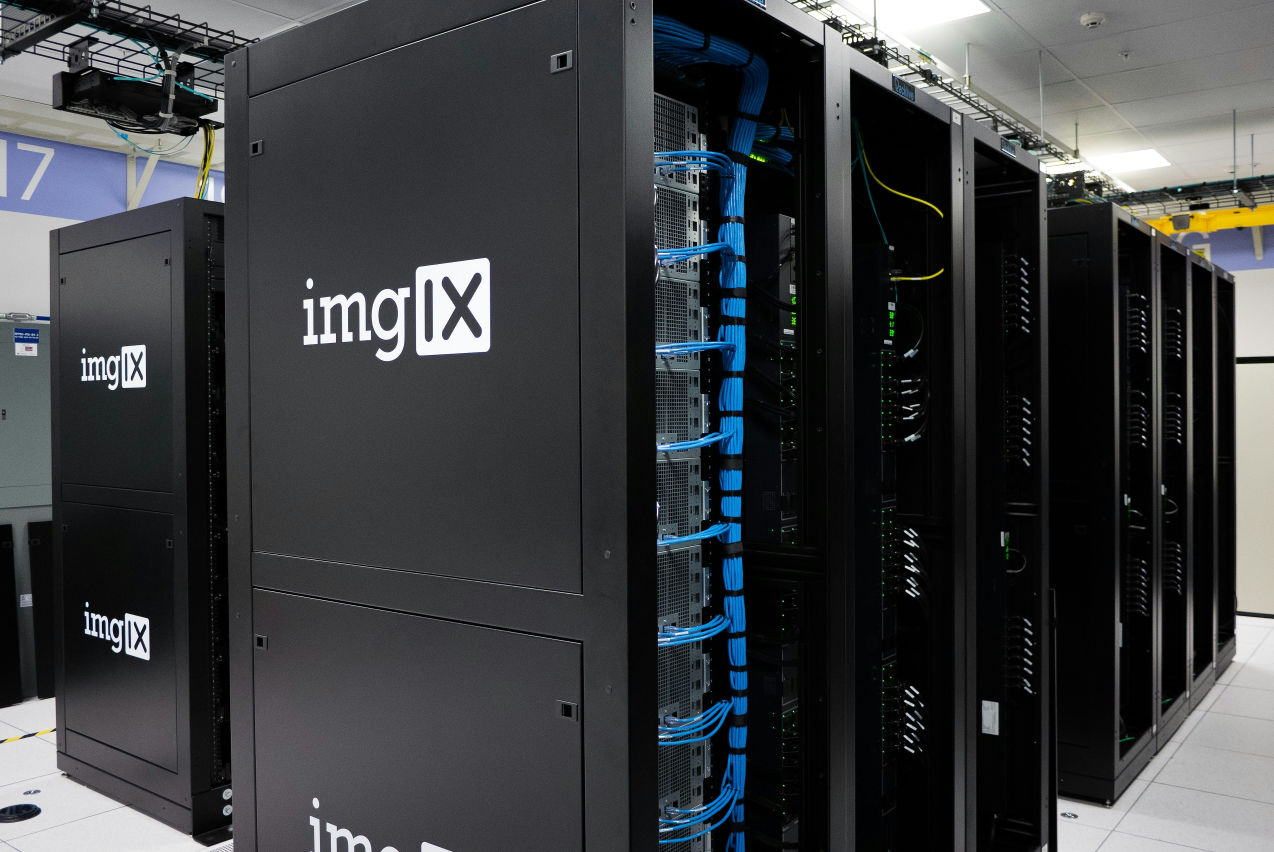
MDF vs IDF: Major Differences and Examples
In networking infrastructure, two critical components that often come into focus are the Main Distribution Frame (MDF) and the Intermediate Distribution Frame (IDF). These elements are vital in establishing a well-organized, efficient, and robust network system design. Understanding the differences between MDF and IDF is essential for anyone involved in network planning, security, implementation, or management. This guide explores these differences, providing real-world examples to illustrate their distinct roles within networking infrastructures.
Why is it Important to Understand MDF and IDF in Networking?
Understanding the distinctions between Main Distribution Frame (MDF) and Intermediate Distribution Frame (IDF) is crucial, especially in a time when not all companies have transitioned to cloud-based solutions. The digital landscape is evolving, becoming more complex as businesses navigate a mix of on-premises networks, co-location (Co-Lo) facility networks, cloud infrastructure, and Software as a Service (SaaS) applications. The decision-making at the core switch level, involving MDF and IDF, is fundamental to the successful operation and integration of these diverse environments.
MDF and IDF are key components in network design, serving as central hubs for connecting and managing various network devices and communications. MDF is the primary point of connectivity, linking external and internal networks, while IDF acts as a secondary point, connecting devices within a specific area to the MDF. As companies increasingly manage a blend of on-premises and cloud infrastructures, along with Co-Lo and SaaS applications, the role of MDF and IDF becomes even more critical.
Errors made at the MDF and IDF level can lead to significant network disruptions, affecting not just internal communications but also the delivery of services to end users. Such mistakes can have far-reaching consequences, impacting business operations, customer satisfaction, and overall company reputation. Therefore, a deep understanding of MDF and IDF, their functions, and their integration within the modern network infrastructure is essential for IT professionals. This knowledge ensures the robustness and resilience of a company's network, supporting its diverse and evolving technological landscape.
The terms MDF and IDF are thrown around quite a bit in the world of networking, but what do they really mean? Let's break down these concepts to understand their fundamental importance in a network's architecture.
What Is A Distribution Frame?
A distribution frame in the networking context is a physical structure that serves as the central point for connecting and managing cables and hardware in a telecommunications facility. It's where the magic happens – the central point where data is received, managed, and distributed to various parts of a network. These frames are crucial for organizing and securing the network's physical components, like cables and switches, and ensuring the data flow is smooth and uninterrupted.
Understanding Computer Network Wiring Distributions
Computer network wiring distribution refers to the organized arrangement of cables and hardware that facilitates communication between various devices within a network. This system is the lifeline of network infrastructure, connecting different devices and enabling them to communicate effectively. Proper wiring distribution is critical for network efficiency, reliability, and scalability. It involves the strategic placement of cables, network devices, and connection points to ensure optimal performance and ease of maintenance.
In this context, understanding the layout and organization of network wiring is essential. It includes knowledge of cable types (such as Ethernet, fiber optic, and coaxial cables), network topologies (like star, ring, and mesh), and the roles of various network devices (such as switches, routers, and modems). Effective wiring distribution also considers factors like cable length, signal attenuation, and interference, ensuring the network is robust and resilient against potential issues.
Building Blocks Of Efficient Connectivity
MDFs and IDFs are integral to the building blocks of efficient network connectivity, serving as the main arteries through which data flows within a network. They are pivotal in structuring the network's wiring distribution, contributing significantly to its overall performance and scalability.
- Main Distribution Frame (MDF): The MDF is the primary hub of a network's wiring distribution. It is typically located where the external communication lines enter a building or campus, serving as the central point for the network's interface with the outside world. The MDF houses critical networking equipment, including routers, switches, and patch panels, and is responsible for managing the main incoming and outgoing data traffic.
- Intermediate Distribution Frame (IDF): The IDF acts as a secondary hub, extending the connectivity from the MDF to various locations within the building or campus. It is strategically placed to reduce cable lengths and ensure that network services are distributed efficiently across different areas. IDFs are equipped with networking equipment such as switches and patch panels, facilitating local network connections and providing a closer point of network access for devices and end-users.
What Is An IDF & MDF?
In the architecture of network infrastructures, two pivotal components play critical roles in ensuring efficient data communication and connectivity across various devices and locations: the Main Distribution Frame (MDF) and the Intermediate Distribution Frame (IDF). Understanding these components is essential for anyone involved in network design, management, or operation.
Main Distribution Frame (MDF)
The Main Distribution Frame (MDF) is a critical component of network infrastructure, acting as the primary hub where external communication lines enter a building or campus. It's essentially the heart of the network, responsible for connecting to the outside world, such as internet service providers (ISP) or other external networks.

Key Characteristics of MDF:
- Central Connection Point: The MDF serves as the primary interface between the external communication lines and the internal network, ensuring that data is distributed efficiently across the network.
- Houses Critical Equipment: It typically contains essential networking equipment, including routers, switches, and patch panels, which manage and route the data traffic.
- Scalability and Management: The MDF is designed to accommodate growth and changes in the network, providing a centralized location for network management and expansion.
- Security and Accessibility: Security Monitoring is really important in networking infrastructure. Given its critical role, the MDF is usually secured and accessible only to authorized personnel to prevent unauthorized access and ensure the network's integrity.
Intermediate Distribution Frame (IDF)
The Intermediate Distribution Frame (IDF) is a secondary hub within the network infrastructure, extending the connectivity from the MDF to various endpoints or areas within a building or campus. It acts as a bridge, facilitating communication between the MDF and the end-user devices or local networks.
Key Characteristics of IDF:
- Local Distribution: The IDF serves as a distribution point that extends the network's reach from the MDF to specific areas, floors, or sections of a building, ensuring localized access to network resources.
- Contains Networking Equipment: Similar to the MDF, the IDF houses networking equipment like switches and patch panels, which are crucial for local data routing and connectivity.
- Enhances Network Performance: By providing a closer connection point to end-user devices, IDFs help reduce cable lengths and potential signal degradation, enhancing overall network performance and reliability.
- Facilitates Network Segmentation: IDFs allow for network segmentation, isolating different network segments to enable better traffic management, increased security, and improved network performance.
Importance Of MDF And IDF In Network Infrastructure
The MDF and IDF are not just physical spaces or pieces of equipment; they are critical components that define the network's architecture and influence its performance, reliability, and scalability.
- Main Distribution Frame (MDF): The MDF is the primary hub of a network's cabling system, where external communications lines enter the building and connect to the internal network. It is the heart of the network infrastructure, integrating various external and internal communication channels and ensuring that data is distributed correctly throughout the network. The MDF typically houses key equipment, such as routers, switches, and patch panels, which are essential for managing and directing network traffic.
- Intermediate Distribution Frame (IDF): The IDF, on the other hand, serves as a secondary hub, extending the connectivity from the MDF to specific areas or floors within a building. It acts as a relay point, facilitating the distribution of network services to end devices in closer proximity. IDFs are strategically placed throughout the network to reduce cable lengths, enhance signal quality, and support efficient data transmission. They typically house switches and patch panels, which help manage and route local network traffic.
Co-Lo (Colocation) Facility Networks
In colocation (co-lo) facility networks, the significance of MDFs and IDFs is magnified due to the shared environment and the need for high availability, scalability, and security. These facilities host the network infrastructure of multiple tenants, requiring an organized and robust framework to manage and distribute network services effectively.
- MDFs in Co-Lo Environments: In a colocation setting, the MDF is crucial for integrating and managing the multiple external connections from different service providers. It serves as the primary exchange point where tenants' networks connect with external networks, including the Internet, cloud services, or other data centers.
- IDFs in Co-Lo Environments: IDFs play a vital role in extending connectivity within the colocation facility, ensuring 0tenants have reliable and efficient access to their network resources. They enable the distribution of network services across different areas of the facility, allowing tenants to manage their own network segments while maintaining connectivity to the MDF and external networks.
Understanding MDF (Main Distribution Frame)
The Main Distribution Frame (MDF) is a crucial component in any network infrastructure, acting as the nerve center where external and internal communications converge. It is fundamental in ensuring that data is routed correctly across the network, impacting everything from the network's design to its day-to-day operations.
Function Of MDF
The MDF's primary function is to serve as the central hub for the network's telecommunications. It is where external service provider lines are terminated and connected to the internal network cabling. This hub facilitates the management of various types of communication, including voice, data, and Internet services. It hosts essential networking equipment, such as routers, switches, and patch panels, which are critical for directing and managing network traffic.
Primary Distribution Point
As the primary distribution point, the MDF is the first stop for incoming signals and the last point for outgoing communication. It acts as the main intersection where all network lines converge, making it critical for network performance and reliability. Proper configuration and maintenance of the MDF are vital to ensure that data flows seamlessly to and from the IDF, end-user devices, and external networks.
Connection To Central Office
The MDF's connection to the central office or external service provider is a key aspect of its functionality. This connection is where the network interfaces with the broader telecommunications infrastructure, allowing for data exchange with the outside world. The MDF facilitates this connection through various telecommunications lines, such as T1/E1 lines, fiber optic cables, or broadband services, ensuring that the network has access to external services and can communicate beyond its local environment.
In Premises Networks
Within the premises, the MDF is integral to the network's infrastructure. It is typically located in a central area to optimize connectivity and minimize cable lengths, thus reducing potential signal loss and interference. The MDF's strategic position ensures that it can efficiently distribute services throughout the building or campus, providing a reliable and robust network backbone that supports all connected devices and systems.
Role In Network Infrastructure

The MDF plays a central role in network infrastructure, acting as the primary hub where all external and internal communications converge. It's the nerve center of a network's cabling system, serving as the initial distribution point for incoming and outgoing signals. The MDF houses major networking equipment, including routers, switches, and patch panels, which are essential for data routing, signal distribution, and connectivity management.
Importance Of MDF In Data Transmission
In the realm of data transmission, the MDF is indispensable. It ensures that data flows seamlessly across the network, facilitating communication between various devices and external networks. The MDF's strategic position in the network infrastructure enables it to manage large volumes of data, distribute network traffic efficiently, and serve as a critical point for network monitoring and troubleshooting. Its efficiency directly influences the overall performance and reliability of the network, making it a key player in maintaining network integrity and speed.
Use Of Fiber Optic Cables In MDF
Fiber optic cables are increasingly becoming the standard in MDFs due to their superior performance characteristics. Unlike traditional copper cables, fiber optics offer higher bandwidth, longer transmission distances, and immunity to electromagnetic interference. In an MDF, fiber optic cables are used to handle the high-speed data transmission requirements, connecting the MDF to external networks and ensuring that data is transmitted quickly and reliably. Their use in MDFs is a testament to the growing demand for faster, more reliable network connections capable of supporting large volumes of data.
Interconnect Management In MDF
Interconnect management is a critical aspect of MDF operations, involving the organization, arrangement, and maintenance of physical connections within the frame. Effective interconnect management ensures that cables are neatly organized, clearly labeled, and easily accessible for maintenance or reconfiguration. It also involves managing cross-connections, which are vital for routing signals between different circuits or pieces of equipment. Proper interconnect management in an MDF not only optimizes network performance but also simplifies troubleshooting, enhances network security, and supports efficient scalability as network needs evolve.
Patch Panels And Cross Connects In MDF
Patch panels and cross connects are integral components within an MDF, serving as crucial points for cable management and network organization.
- Patch Panels: These are panels with multiple ports used to terminate and connect incoming and outgoing lines. Patch panels within an MDF facilitate the organization and routing of cable connections, providing a structured and easily accessible way to manage network cables. They play a vital role in network maintenance and troubleshooting, allowing technicians to quickly change the path of certain signals without the need for extensive rewiring.
- Cross Connects: Cross connects refer to the direct connections within the MDF between incoming and outgoing lines. They can be used to establish direct routes for data transmission, bypassing the need for additional networking equipment. This can be particularly useful for creating dedicated pathways for critical data or for simplifying the network layout, which can enhance performance and reduce latency.
Understanding IDF (Intermediate Distribution Frame)
The Intermediate Distribution Frame (IDF) is an essential component in network infrastructure, particularly within premises networks. It acts as a secondary hub, extending the connectivity from the Main Distribution Frame (MDF) to various endpoints. By understanding the IDF's function, its role in premises networks, and how it serves as an intermediate distribution point, network professionals can optimize network performance and scalability.
Function Of IDF
The IDF's primary function is to provide a connection point between the MDF and end-user devices or local network segments. It serves as a relay, facilitating the distribution of network services and data across different areas or floors within a building. By decentralizing network resources, IDFs help manage and mitigate potential bottlenecks, ensuring more efficient and reliable network performance.
In an IDF, you'll typically find network equipment such as switches, patch panels, and sometimes routers, which help manage and route the local network traffic. These devices allow for flexibility in network design, enabling changes and expansions to be made more easily and with minimal disruption to the overall network.
In Premises Networks
Within premises networks, IDFs are strategically placed to minimize cable lengths and ensure that network access is uniformly available throughout the facility. This placement is crucial for maintaining signal strength and quality, especially in larger buildings or campuses where the distance from the MDF to end devices could otherwise result in signal degradation.
IDFs are particularly important in multi-story buildings or extensive single-story structures, where they facilitate connectivity across different areas, ensuring that each section of the building has adequate network access. They also allow for a more manageable and segmented approach to network administration, as network professionals can address issues or make upgrades in localized areas without affecting the entire network.

Intermediate Distribution Point
As an intermediate distribution point, the IDF plays a pivotal role in the network's hierarchical structure. It acts as a bridge between the high-capacity backbone connectivity provided by the MDF and the end-user devices or local area networks. This intermediation helps distribute the network load, preventing any single point from becoming overwhelmed and potentially causing network slowdowns or outages.
By strategically placing IDFs throughout a network, organizations can ensure more reliable and consistent network performance, with reduced latency and improved data transmission speeds. Additionally, IDFs provide a level of redundancy; in case one IDF encounters issues, others can help maintain network connectivity, enhancing the overall resilience of the network infrastructure.
Connection To MDF And End Users
The IDF is fundamentally linked to the MDF, the network's central hub. This connection is vital as it enables the IDF to receive and distribute the network's data flow to specific areas or floors within a building. The IDF is strategically positioned to bridge the gap between the high-capacity backbone provided by the MDF and the end users, ensuring that data transmission is efficient and reaches all parts of the network as intended.
In practice, the connection between the MDF and IDF is typically facilitated by high-speed cabling, often fiber optic, to maintain data integrity and speed over distances. The IDF then uses this connection to distribute network services to end-user devices, such as computers, printers, and other networked equipment, via local copper-based cabling, like Ethernet.
Role In Network Infrastructure
The IDF's role in network infrastructure is multifaceted. It not only serves as a distribution point but also plays a key part in network management and scalability. By decentralizing the network's core services, IDFs allow for localized management, which can significantly ease maintenance and troubleshooting, reducing downtime and improving overall network performance.
Furthermore, IDFs enable the network to be more adaptable and scalable. As the needs of the organization grow, additional IDFs can be installed to extend network coverage or increase capacity, providing a flexible approach to network expansion that minimizes the need for major overhauls.
Importance Of IDF In Data Transmission
The significance of the IDF in data transmission cannot be overstated. It ensures that data does not have to travel long distances from the MDF to reach end-user devices, which helps maintain high data transmission rates and reduces the likelihood of signal degradation or loss.
Moreover, by having multiple IDFs distributed throughout a premises, the network can manage data flow more efficiently, preventing bottlenecks that can occur when too many users or devices try to access the same resources simultaneously. This network load distribution helps maintain consistent network performance, even under heavy usage conditions.
In Premises Networks

Within premises networks, IDFs are strategically placed to minimize cable lengths and ensure that network access is uniformly available throughout the facility. This placement is crucial for maintaining signal strength and quality, especially in larger buildings or campuses where the distance from the MDF to end devices could otherwise result in signal degradation.
IDFs are particularly important in multi-story buildings or extensive single-story structures, where they facilitate connectivity across different areas, ensuring that each section of the building has adequate network access. They also allow for a more manageable and segmented approach to network administration, as network professionals can address issues or make upgrades in localized areas without affecting the entire network.
Use Of Cable Racks In IDF
Cable racks in an IDF serve as the structural framework that organizes and supports various types of network cables. Their use is fundamental for several reasons:
- Organization: Cable racks help in neatly arranging the cables, which is vital for easy identification, access, and maintenance. Proper organization prevents cable tangling, which can lead to damage or interference.
- Accessibility: Well-organized cable racks provide easy access for network technicians, facilitating quicker and more efficient maintenance or troubleshooting, thereby reducing downtime.
- Airflow and Cooling: Properly arranged cables on racks ensure better airflow around the network equipment, which is crucial for maintaining optimal temperatures and preventing overheating.
- Scalability: As the network grows or changes, cable racks offer a flexible way to add new cables or reconfigure existing setups without disrupting the overall network infrastructure.
- Safety: Cable racks help minimize tripping hazards by keeping cables organized and off the floor, protecting them from potential damage.
Switches And Routers In IDF
Switches and routers are key network devices housed within an IDF, each playing a distinct role in network communication:
- Switches:
- Switches are integral in an IDF, connecting devices within the same network segment or VLAN. They facilitate communication between devices by processing and forwarding data to the correct destination within the local network.
- They help in managing network traffic efficiently, reducing unnecessary data broadcasting to the entire network, which enhances performance and security.
- Routers:
- Routers in an IDF may connect multiple network segments or VLANs, directing data between them. They determine the best path for data packets to travel across the network or to external networks.
- While not every IDF may contain a router (as many internal routing decisions are handled by switches), routers are essential when inter-VLAN routing or WAN access is required.
Key Differences Between MDF and IDF
While both Main Distribution Frames (MDFs) and Intermediate Distribution Frames (IDFs) are essential components of a network's infrastructure, they have distinct roles and characteristics, particularly in the areas of security, scalability, and redundancy. Understanding these differences is crucial for network design, management, and optimization.
Security
- MDF Security: The MDF, being the primary hub, often requires more stringent security measures compared to IDFs. This is because it houses critical equipment that connects the internal network to external services. Enhanced security protocols, such as restricted access, surveillance, and advanced authentication methods, are typically implemented to protect the MDF from unauthorized access or tampering.
- IDF Security: While security is also important for IDFs, the focus might be slightly different. IDFs are distributed throughout the premises and may not always house the same level of critical or sensitive equipment as the MDF. However, they still require adequate security measures to prevent unauthorized access and ensure the integrity of the network connections they facilitate.
Scalability
- MDF Scalability: The MDF is central to the network's scalability. As the network grows or needs to integrate new services, the MDF must have the capacity and flexibility to accommodate these changes. This might involve adding more equipment, increasing bandwidth, or integrating new technologies.
- IDF Scalability: IDFs offer scalability at a more localized level. As specific areas or floors within a building require more network resources or connections, IDFs can be expanded or added to meet these localized demands. This allows the network to scale efficiently in response to changing needs without always overhauling the central MDF.
Redundancy
- MDF Redundancy: Given its critical role, redundancy is vital for the MDF to ensure network continuity in case of equipment failure or other disruptions. This might include having backup systems, duplicate hardware, or alternative data paths to maintain network operations if the primary systems fail.
- IDF Redundancy: Redundancy is also important for IDFs, but it may be implemented differently, focusing on ensuring that local network segments remain operational even if one IDF experiences issues. This can involve redundant connections to the MDF or between IDFs, ensuring that data can be rerouted as needed to maintain connectivity.
Location and Purpose
- MDF: The Main Distribution Frame is typically located where external communication lines enter a building or campus, serving as the primary hub for the network. Its purpose is to centralize the network's connectivity, acting as the primary point where external data lines connect to the internal network infrastructure. It's also where major network decisions and routing occur, handling the bulk of data traffic.
- IDF: On the other hand, Intermediate Distribution Frames are distributed throughout a building or campus, closer to end-user devices. Their purpose is to facilitate and extend the network connectivity provided by the MDF to various floors or sections of a building. IDFs serve as secondary hubs, managing local network traffic and providing a closer network access point for end devices.
Role in Network Communication
- MDF: The MDF is the core of network communication, handling high-capacity data transmission and making critical routing decisions. It's the primary point for aggregating data traffic from IDFs and directing that traffic to and from external networks.
- IDF: IDFs play a supportive role in network communication, focusing on distributing the network to localized areas. They handle localized data traffic, connecting end-user devices to the broader network infrastructure. IDFs ensure that data is efficiently relayed between the MDF and end devices, maintaining network performance and reliability.
Connection to External Network
- MDF: Directly connected to external networks, the MDF is the network's gateway to the outside world. It's where the external internet service provider (ISP) lines, or other external data lines, converge with the internal network, facilitating data exchange between the internal network and external sources.
- IDF: IDFs are typically not directly connected to external networks. Instead, they rely on the connection established by the MDF to access external data. Their primary focus is on internal data distribution within the premises, ensuring end devices can communicate with each other and access external resources through the MDF.
Management and Organization
- MDF: Given its central role in the network, the management and organization of an MDF are critical. It requires careful planning to accommodate future growth, manage high data traffic volumes, and ensure security and reliability. The organization of devices, cables, and equipment in the MDF is crucial for efficient network operation and ease of maintenance.
- IDF: While managing IDFs is also important, it tends to focus more on local network needs and less on the overall network's backbone. The organization within an IDF is essential for ensuring that local network segments are efficiently connected and can be easily managed and maintained by network administrators.

Advantages And Disadvantages Of MDF And IDF
Benefits And Drawbacks Of MDF
The Main Distribution Frame (MDF) is a crucial component of any network infrastructure, providing a central hub for data transmission and connectivity. However, like any key system component, it comes with its own set of advantages and disadvantages.
Advantages of MDF:
- Centralization: The MDF centralizes network connectivity, making it easier to manage and monitor the entire network from a single point. This centralization simplifies the process of diagnosing and addressing network issues, enhancing overall network management efficiency.
- High Capacity: As the primary hub, the MDF is designed to handle high-capacity data transmission, accommodating the bulk of the network's data flow. This capacity is crucial for supporting large-scale network operations and ensuring smooth data transmission across the network.
- Scalability: MDFs are generally designed with scalability in mind, allowing for future network expansion. The addition of new equipment and connections can be managed more systematically within the MDF, supporting the network's growth over time.
- Improved Performance: By serving as the network's core distribution point, the MDF can optimize data routes, reducing latency and improving overall network performance.
Drawbacks of MDF:
- Complexity: The centralization that provides many of the MDF's benefits also introduces complexity. The high concentration of network connections and equipment in a single location can make the MDF challenging to configure and maintain.
- Cost: Establishing and maintaining an MDF can be costly, given the need for high-capacity equipment and the space required to house the frame and its associated components.
- Single Point of Failure: While not inherent to every MDF, if not properly configured with redundancy, the MDF can become a single point of failure for the network. If the MDF experiences a problem, it can impact the entire network's connectivity and performance.
- Security Risks: Given its critical role in the network, the MDF can be a target for security threats. Ensuring the security of the MDF is crucial, as breaches or attacks can have widespread implications for the network.
Benefits And Drawbacks Of IDF
Intermediate Distribution Frames (IDFs) are crucial in network design, particularly in larger buildings or campuses where they serve as intermediary points for data transmission. Like MDFs, IDFs have their own set of advantages and disadvantages that influence their implementation and management within a network infrastructure.
Advantages of IDF:
- Localized Network Management: IDFs allow for localized management of network connections, making it easier to address and resolve issues specific to a particular area or floor within a building.
- Enhanced Network Performance: By distributing the network load across various IDFs, the overall network performance can be optimized, reducing the risk of bottlenecks and ensuring more consistent connectivity and data transmission speeds.
- Scalability: IDFs offer scalability within the network design, allowing for the addition of connections and devices in localized areas without the need to overhaul the central network infrastructure.
- Reduced Cable Lengths: Having IDFs closer to the end-user devices reduces the length of cabling required, which can improve signal quality and reduce costs associated with cable installation and maintenance.
- Improved Fault Isolation: In the event of a network issue, IDFs can help isolate the problem to a specific segment of the network, making it easier to diagnose and resolve without impacting the entire network.
Drawbacks of IDF:
- Increased Infrastructure Requirements: Implementing IDFs requires additional space, equipment, and cabling, which can increase the complexity and cost of the network infrastructure.
- Management Complexity: While IDFs can localize network management, they also introduce additional points that need to be monitored and maintained, which can increase the overall complexity of network management.
- Security Concerns: Each IDF represents an additional point in the network that needs to be secured. Ensuring the physical and network security of multiple IDFs can be more challenging and resource-intensive than managing a single, centralized location.
- Dependency on MDF: Despite their localized control, IDFs are still dependent on the MDF for overall connectivity and access to external networks. Any issues at the MDF level can impact the performance and functionality of the IDFs.
Considerations for Choosing Between MDF and IDF in Network Infrastructure
When designing a network infrastructure, deciding between Main Distribution Frames (MDFs) and Intermediate Distribution Frames (IDFs) involves several key considerations. These choices can significantly impact the network's efficiency, scalability, and manageability. Here are the primary factors to consider when determining the optimal balance and configuration of MDFs and IDFs in a network setup:
- Network Size and Scope: The size of the network and the physical area it covers are crucial factors. Larger networks with multiple floors or buildings typically require a combination of MDFs and IDFs to ensure efficient data distribution and connectivity. In contrast, smaller networks might only need an MDF.
- Distance and Signal Strength: Signal attenuation over distance is a critical concern in network design. IDFs help mitigate signal degradation by serving as relay points, ensuring the network maintains strong signal strength across various distances and physical barriers.
- Scalability: Future network growth should be a key consideration. An infrastructure with a well-planned IDF deployment can more easily accommodate additional users, devices, and services without significant reconfiguration or overhaul.
- Cost Considerations: Budget constraints play a significant role in network planning. While IDFs can improve network performance, they also add to the infrastructure cost. Balancing cost against performance needs is essential for an optimal design.
- Network Management and Maintenance: Consider how the presence of MDFs and IDFs will affect network management practices. Multiple IDFs can decentralize network management, potentially simplifying troubleshooting and maintenance, but may require more resources to manage.
- Redundancy and Reliability: Ensuring network uptime is critical for most organizations. The strategic use of MDFs and IDFs can enhance network redundancy, providing alternative paths for data transmission in case of failure.
- Physical Space and Environment: The availability of physical space and the environmental conditions of the network's location can influence the placement and number of MDFs and IDFs. Adequate ventilation, cooling, and physical security are necessary to protect these vital assets.
- Compliance and Standards: Adherence to industry standards and regulatory requirements might dictate specific needs for MDF and IDF placement and configuration, impacting how and where these frames are deployed within the network.
- Network Performance Objectives: Different network designs can impact performance in varied ways. Consider the specific performance objectives of the network, such as latency, bandwidth, and reliability, when deciding on the deployment of MDFs and IDFs.
How MDFs and IDFs Connect and Integrate with Cloud Infrastructure
As businesses increasingly move towards cloud computing, understanding how Main Distribution Frames (MDFs) and Intermediate Distribution Frames (IDFs) integrate with cloud infrastructure becomes crucial. These physical components of the network infrastructure play significant roles in connecting on-premises networks to cloud services, ensuring seamless data transmission and accessibility.
Connectivity to Cloud Services
- MDFs and Cloud Gateways: MDFs, being the primary network hubs, often host the necessary hardware or virtual appliances that serve as cloud gateways. These gateways facilitate secure and efficient communication between the on-premises network and cloud services. They manage internet-bound traffic, optimize routes, and ensure that data packets reach their intended cloud destinations.
- IDFs and Localized Cloud Access: While IDFs primarily manage local traffic, they also play a role in cloud connectivity. By efficiently routing traffic from various network segments to the MDF (and subsequently to the cloud), IDFs ensure that end-user devices can access cloud resources with minimal latency and maximum bandwidth efficiency.
Integration with Cloud Architectures
- Hybrid Cloud Environments: In hybrid cloud setups, MDFs and IDFs are integral in managing the data flow between on-premises infrastructure and cloud environments. They help in implementing hybrid networking, where certain workloads are kept on-premises for performance or security reasons while others are migrated to the cloud.
- Cloud-Based Management: Modern network management tools, often cloud-based, can integrate with the network infrastructure managed by MDFs and IDFs. These tools provide analytics, monitoring, and management capabilities, giving IT teams insights into network performance and the ability to orchestrate changes across both on-premises and cloud environments.
- Direct Cloud Connectivity: For enhanced performance and security, direct connections to cloud providers (such as AWS Direct Connect or Azure ExpressRoute) can be established at the MDF level. These connections bypass the public internet, providing a more reliable and consistent network experience for cloud services.
- Edge Computing: As edge computing gains prominence, IDFs can serve as edge locations where data is processed closer to its source before being sent to the cloud or other parts of the network. This reduces latency and bandwidth usage, enhancing the performance of cloud applications.
- Virtualization and SDN: Software-defined networking (SDN) and network function virtualization (NFV) can be implemented at the MDF and IDF levels to create more dynamic and flexible network topologies. This allows for easier integration and management of cloud services, enabling networks to adapt quickly to changing requirements.
Importance Of Understanding The Differences And Roles Of MDF And IDF
In the realm of network infrastructure, grasping the distinctions and specific roles of Main Distribution Frames (MDFs) and Intermediate Distribution Frames (IDFs) is paramount for several key reasons. This understanding is crucial not only for network design and implementation but also for ongoing management and troubleshooting. Here's why it's essential:
Effective Network Design and Implementation
Knowing the differences and purposes of MDFs and IDFs allows for their strategic placement within the network infrastructure. This ensures optimal performance, with MDFs serving as central hubs and IDFs extending connectivity to all network endpoints. Similarly, a deep understanding of MDFs and IDFs is vital for planning future network expansions and helps in Scalability. It ensures that as the network grows, it remains efficient, reliable, and scalable without the need for costly overhauls.
Enhanced Network Performance
It also helps with optimized data flow, so understanding the roles of MDFs and IDFs helps optimize data flow across the network, reduce latency, and improve overall network performance. Properly utilizing MDFs and IDFs allows for effective load balancing, distributing the network load to prevent any single point from becoming a bottleneck.
Efficient Troubleshooting and Maintenance
When network issues arise, knowing the functions and connections of MDFs and IDFs helps quickly isolate and address the problem, reduce downtime, and help with problem isolation. Effective network maintenance requires an understanding of MDF and IDF roles to ensure that interventions are timely and do not disrupt the entire network, which is important for maintenance planning.
Cost-Effective Network Management
By optimizing the use of MDFs and IDFs, organizations can avoid unnecessary expenditures on additional hardware or network reconfigurations. Additionally, understanding MDFs and IDFs enables better decision-making regarding resource allocation, ensuring that investments in network infrastructure yield maximum benefits.
Security and Compliance
Knowing how MDFs and IDFs function and interconnect helps implement robust security measures and protect the network from internal and external threats. In some industries, compliance with standards and regulations requires a clear understanding of network infrastructure, including the roles of MDFs and IDFs, which helps regulatory compliance.
Physical Security of IDF And MDF
The physical security of Main Distribution Frames (MDFs) and Intermediate Distribution Frames (IDFs) is paramount in safeguarding a network's infrastructure. These crucial network hubs house significant equipment that facilitates data transmission and connectivity. Ensuring their security involves implementing various measures to prevent unauthorized access, damage, and disruptions.
Access Control, Surveillance, and Environmental Controls
- Access Control:some text
- MDF and IDF Access: Access to MDFs and IDFs should be strictly controlled and monitored. Only authorized personnel should have access to these rooms to prevent unauthorized tampering or alterations to the network infrastructure.
- Authentication Mechanisms: Utilize key cards, biometric scanners, or pin codes to ensure only authorized individuals can enter the MDF and IDF areas. Logs should be maintained to record access details, including the date, time, and the individual accessing the room.
- Physical Locks: High-quality locks should be installed on all doors leading to MDF and IDF rooms to prevent unauthorized physical entry.
- Surveillance:some text
- CCTV Cameras: Install surveillance cameras at all entry and exit points and within the MDF and IDF rooms to monitor and record activities. This can deter potential intruders and provide a means to investigate any incidents.
- Alarm Systems: Intrusion detection systems and alarms can alert security personnel to any unauthorized access attempts, providing an immediate response to potential security breaches.
- Environmental Controls:some text
- Climate Control: Maintain optimal temperature and humidity levels within MDF and IDF rooms to ensure the longevity and reliability of the equipment. Overheating or excessive moisture can lead to equipment failure and network downtime.
- Fire Suppression: Implement non-water-based fire suppression systems to protect against fire hazards while avoiding damage to electronic equipment.
- Power Supply: Ensure that there are adequate power supply and backup systems in place to prevent outages. Uninterruptible Power Supply (UPS) systems can provide temporary power in case of an outage, allowing for a controlled shutdown or continuous operation of critical components.
- Water Detection: Install water detection systems to alert personnel of any flooding or leaks, which can be particularly crucial in areas prone to such risks.
Network Security of IDF And MDF
While the physical security of Main Distribution Frames (MDFs) and Intermediate Distribution Frames (IDFs) is crucial, their network security is equally important. These central hubs, if compromised, can jeopardize the entire network's integrity. Implementing robust network security measures like network segmentation, firewalls, and intrusion detection systems is essential in safeguarding these critical network components.
Network Segmentation
- Isolation of Network Segments: Network segmentation involves dividing the network into smaller, distinct segments. This isolation helps contain potential security breaches, preventing them from spreading across the entire network.
- Role-Based Access Control: Segmenting the network allows for role-based access control (RBAC), ensuring that users and devices have access only to the network resources necessary for their roles, reducing the risk of internal threats and data breaches.
- Traffic Monitoring and Filtering: Segmented networks enable more effective monitoring and filtering of traffic, allowing for the detection and isolation of suspicious activities within specific segments without affecting others.
Firewalls
- Perimeter Defense: Firewalls serve as the first line of defense, monitoring and controlling incoming and outgoing network traffic based on predetermined security rules. Positioning firewalls at the MDF can help protect the network's core from external threats.
- Internal Firewalls: Beyond external defense, firewalls within the network, especially at critical points like MDFs and IDFs, can help in monitoring and controlling internal traffic, adding an extra layer of security.
- Application-Level Gateways: Firewalls can also function at the application level, inspecting the data being transmitted to ensure it conforms to protocol standards, which is crucial for detecting and blocking sophisticated cyber threats.
Intrusion Detection Systems (IDS) and Intrusion Prevention Systems (IPS)
- Detection and Response: IDS is deployed to monitor network and system activities for malicious activities or policy violations. When integrated with MDFs and IDFs, they can provide real-time alerts about potential security issues.
- Prevention Measures: IPS extends the functionality of IDS by not only detecting threats but also taking pre-defined actions to prevent intrusion, such as blocking traffic from a suspicious source.
- Integration with Other Security Measures: IDS and IPS work best when integrated with other security measures like firewalls and network segmentation, providing a comprehensive security stance.
- Continuous Monitoring: Continuous monitoring and updating of IDS/IPS are crucial to keep abreast of the latest threats, ensuring that the network's defense mechanisms evolve with the emerging security challenges.

How Can Redzone Technologies Help?
Redzone Technologies specializes in providing comprehensive IT solutions that cater to the unique needs of businesses, ensuring their network infrastructure is robust, secure, and efficient. With a focus on innovation and expertise, Redzone Technologies offers a range of services designed to enhance and secure IT environments.
Virtual Security Operations
Our Virtual Security Operations (VSO) service provides organizations access to advanced security operations capabilities without requiring substantial in-house investment in technology and specialized personnel. The VSO service includes continuous monitoring of your digital environment, detection of potential threats, and rapid response to incidents. By leveraging our VSO, your organization benefits from the expertise and technology of a leading cybersecurity operations center, ensuring your assets are protected around the clock.
Tailored IT Assessment Solutions
- Customized Security Assessments: Redzone Technologies provides Tailored IT assessments that analyze the specific needs and vulnerabilities of your network infrastructure. These assessments offer insights into the performance, security, and efficiency of your IT environment, identifying areas for improvement and optimization.
- Security Audits: With a keen focus on network security, Redzone Technologies conducts thorough security audits, evaluating the effectiveness of your current security measures and identifying potential vulnerabilities within your MDFs, IDFs, and broader network.
- Compliance Checks: Ensuring that your network complies with relevant industry standards and regulations is crucial. Redzone Technologies offers compliance assessment services, helping you meet necessary compliance requirements and avoid potential legal and financial penalties.
Key Partnerships
- Industry Leaders: Redzone Technologies collaborates with key industry leaders and vendors, providing clients with access to cutting-edge technologies and solutions. These partnerships ensure that your network infrastructure benefits from the latest advancements in IT.
- Integrated Solutions: Through strategic partnerships, Redzone Technologies delivers integrated solutions that encompass various aspects of IT infrastructure, from security to data management, ensuring a cohesive and unified IT environment.
Featured Solutions/Related Services
- Advanced Security Services: Redzone Technologies offers advanced security solutions, including intrusion detection systems, firewalls, and network segmentation strategies, designed to protect your MDFs and IDFs from both external and internal threats.
- Cloud Integration: Assisting in the seamless integration of cloud services with your on-premises network, Redzone Technologies ensures that your MDFs and IDFs are effectively connected to cloud infrastructure, enhancing flexibility and scalability.
- Ongoing Support and Maintenance: Beyond initial assessments and implementations, Redzone Technologies provides ongoing support and maintenance services, ensuring that your network infrastructure remains up-to-date, secure, and optimized for performance.
Conclusion
Understanding the intricacies of Main Distribution Frames (MDFs) and Intermediate Distribution Frames (IDFs) is crucial for anyone involved in network design, management, or operations. These components are not just physical entities within a network but are pivotal in ensuring efficient, reliable, and secure data transmission and connectivity within any organizational infrastructure.
MDFs, serving as the primary hubs, play a vital role in connecting the external network with the internal infrastructure, while IDFs act as secondary but crucial points, extending the connectivity to various segments within premises. The differentiation in their roles, locations, and functions is fundamental to optimizing network performance and enhancing the scalability and flexibility of the network infrastructure.
Moreover, the physical and network security of MDFs and IDFs cannot be overstressed. Implementing robust security measures, including access control, surveillance, environmental controls, network segmentation, firewalls, and intrusion detection systems, is essential to safeguard these critical network components from potential threats and ensure uninterrupted network service.
In the evolving landscape of IT, where cloud integration and edge computing are becoming increasingly prevalent, the roles of MDFs and IDFs are also adapting. Their effective integration into cloud-based architectures underscores the importance of a well-thought-out network design that accommodates future technological shifts and demands. Our Resources include whitepapers, case studies, blogs, and webinars that cover a wide range of cybersecurity topics. For more information on securing your organization's future with proactive cybersecurity measures, Contact Us today.
Redzone Technologies stands ready to assist organizations in navigating these complexities, offering tailored IT assessment solutions, leveraging key partnerships, and providing a suite of services designed to enhance and secure network infrastructures. With a deep understanding of MDFs, IDFs, and the broader network ecosystem, Redzone Technologies can help businesses optimize their network infrastructure, ensuring it is robust, secure, and aligned with their strategic goals.
FAQs
Where Are IDF Rooms Used?
Intermediate Distribution Frame (IDF) rooms are strategically utilized within various sections of a building or campus to facilitate efficient network communication and connectivity. These rooms are typically found on individual floors or in specific areas of large buildings, acting as localized hubs that connect the network's main backbone (housed in the MDF) to end-user devices and systems. The placement of IDF rooms is crucial for ensuring that network signals remain strong and reliable over distances, thereby maintaining high-quality connectivity and performance throughout the facility. In settings like multi-story office buildings, educational campuses, hospitals, and large commercial complexes, IDF rooms play a pivotal role in distributing network resources evenly and effectively across different zones or floors.
How Can the Physical Security of MDF and IDF Be Effectively Managed to Prevent Unauthorized Access?
To effectively manage the physical security of Main Distribution Frames (MDF) and Intermediate Distribution Frames (IDF) and prevent unauthorized access, organizations should implement a multi-layered security strategy. This includes installing robust access control systems, such as keycard readers, biometric scanners, or PIN-based access systems, to ensure that only authorized personnel can enter these critical areas. Surveillance cameras should be installed to monitor access points and the interior of MDF and IDF rooms, providing a visual deterrent to unauthorized access and a means to investigate incidents. Additionally, environmental controls like climate control systems and fire suppression systems should be in place to protect against environmental threats. Regular security audits and access reviews are also vital to identify and rectify potential security gaps. By adopting these comprehensive security measures, organizations can safeguard their MDF and IDF rooms from unauthorized access, ensuring the integrity and reliability of their network infrastructure.
What Network Segmentation Strategies Can Be Applied to MDF and IDF to Enhance Network Security?
Network segmentation strategies involving MDF and IDF can significantly enhance network security by limiting the scope of potential breaches and improving overall network manageability. By dividing the network into smaller, more controlled segments, IT administrators can apply specific security policies tailored to the unique needs and risk profiles of different network areas. For MDFs and IDFs, VLANs (Virtual Local Area Networks) can be employed to segregate network traffic, ensuring that sensitive data is isolated from general network traffic. Access Control Lists (ACLs) can be configured at the MDF and IDF levels to control which devices or users can communicate with each other within the network, further enhancing security. Implementing subnetting is another effective strategy, where different network segments are assigned to different subnets, reducing the risk of widespread network disruptions from localized issues. Additionally, utilizing firewalls at strategic points, especially at IDFs, can help monitor and filter intra-network traffic, preventing unauthorized access and propagation of threats within the network.
Why Is It Important for IT Professionals to Understand the Differences Between MDF and IDF?
For IT professionals, understanding the differences between MDF (Main Distribution Frame) and IDF (Intermediate Distribution Frame) is crucial for several reasons. First, it enables them to design and implement network infrastructures that are efficient, scalable, and secure. Knowing the roles and functions of MDFs and IDFs helps in proper planning and placement, ensuring optimal performance and connectivity across the network. Additionally, it aids in troubleshooting and maintenance, as professionals can pinpoint issues more effectively when they comprehend the network's hierarchical structure. Understanding these differences also facilitates better decision-making regarding network upgrades, expansions, or modifications, allowing for informed strategies that align with the organization's needs. Moreover, with the growing emphasis on network security, IT professionals equipped with knowledge about MDFs and IDFs can implement targeted security measures, ensuring that these critical nodes are adequately protected against potential threats. Overall, this knowledge underpins the ability to create more resilient and adaptable network environments, enhancing the organization's operational efficiency and security posture.
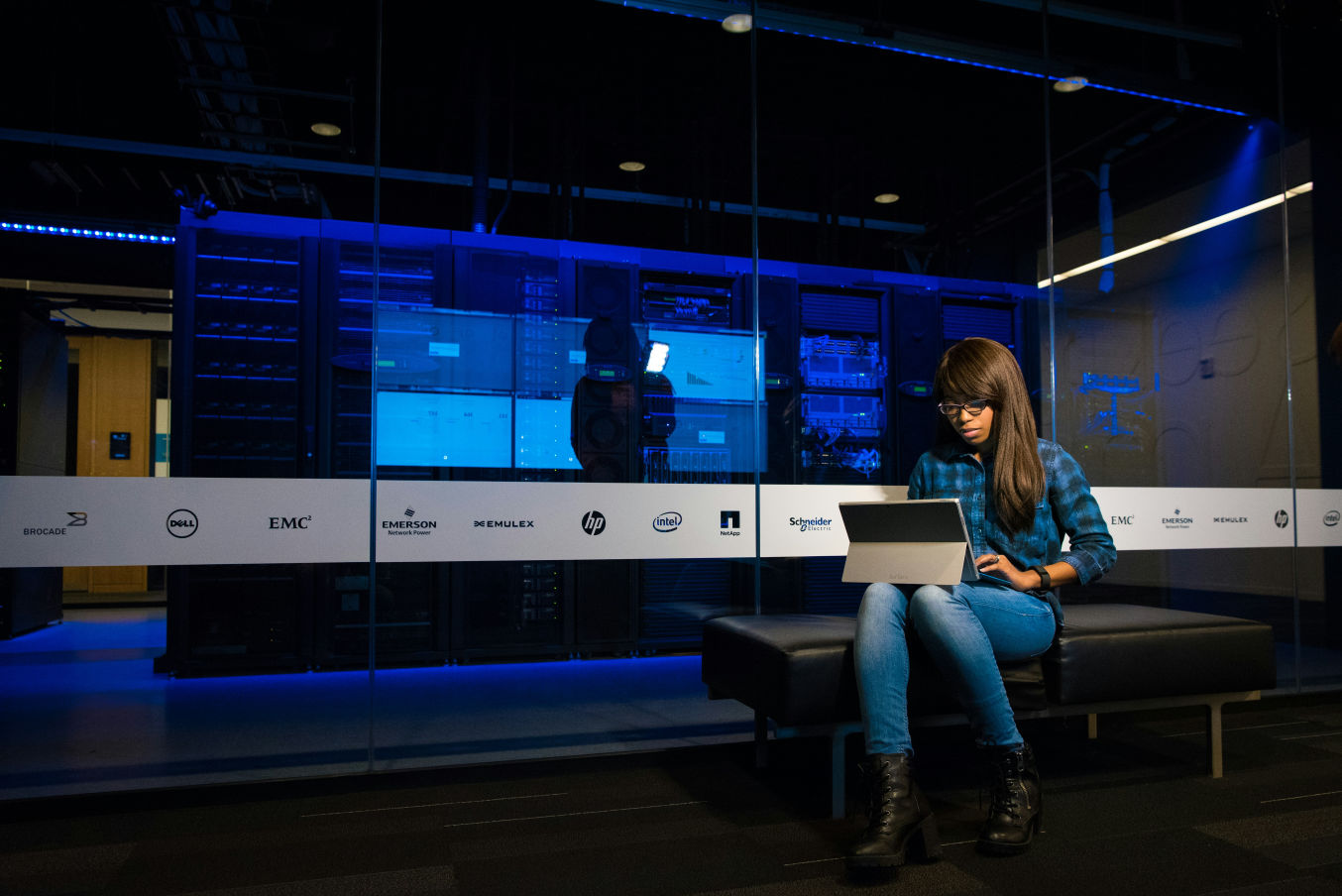 Security Updates
Security UpdatesUnderstanding IT Compliance: Scope, Benefits, and Challenges
Discover what IT compliance is, its importance, benefits, risks of non-compliance, frameworks, and how to achieve robust IT compliance in your organization.
 Security Updates
Security UpdatesImplement Secure Browsing with Powerful SSL Decryption
Explore the essentials of SSL decryption, its importance, challenges, and best practices for enhancing security and compliance for business in a detailed guide
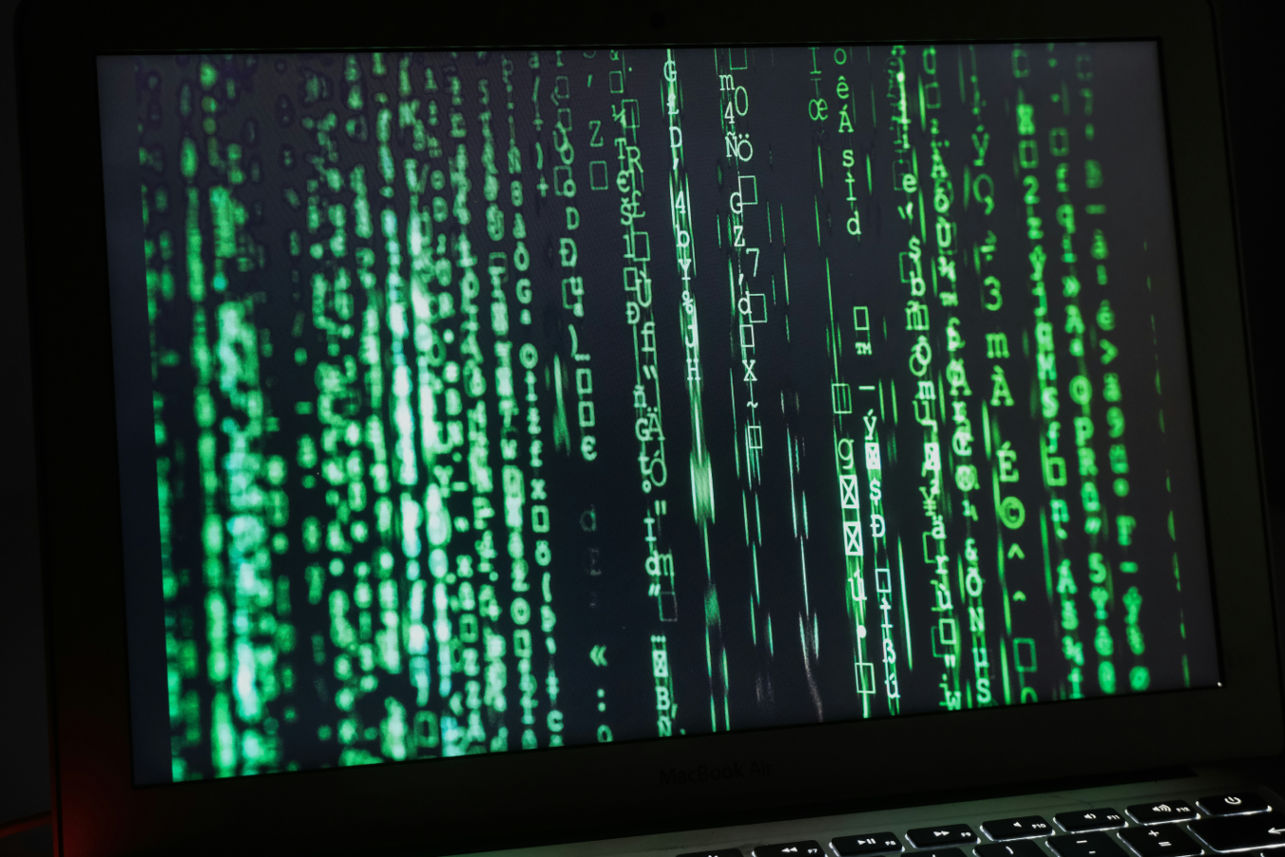 Security Updates
Security UpdatesTransitioning from Proxy Firewalls to Endpoint Security
Explore the evolution from proxy firewalls to endpoint security, enhanced threat detection, data encryption, and comprehensive protection for modern networks.
 Security Updates
Security UpdatesExpert IT Risk Assessment: Protect Your Business Today!
Mitigate potential IT threats with our comprehensive risk assessment guide, ensuring your digital infrastructure. Ensure your business is secure an...
 Security Updates
Security UpdatesEssential Guide to Best Practices in Compliance Security
Explore essential strategies for compliance security in this comprehensive guide. Learn about safeguarding your business and meeting regulatory sta...
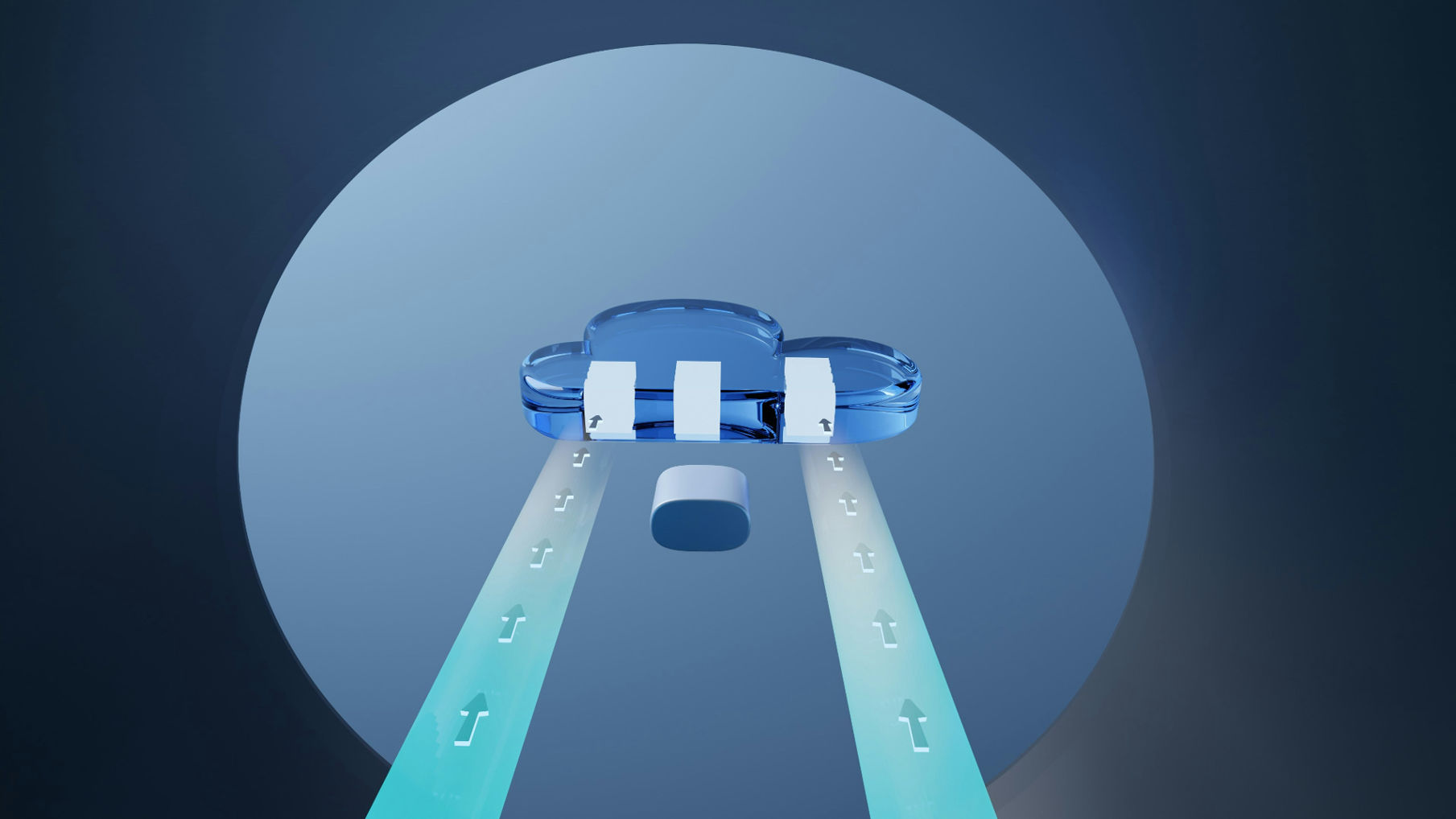 Security Updates
Security UpdatesSecure Your Data with Expert Cloud Database Solutions
Learn efficient solutions and secure your cloud databases with encryption and compliance features, ensuring data safety and privacy across all plat...
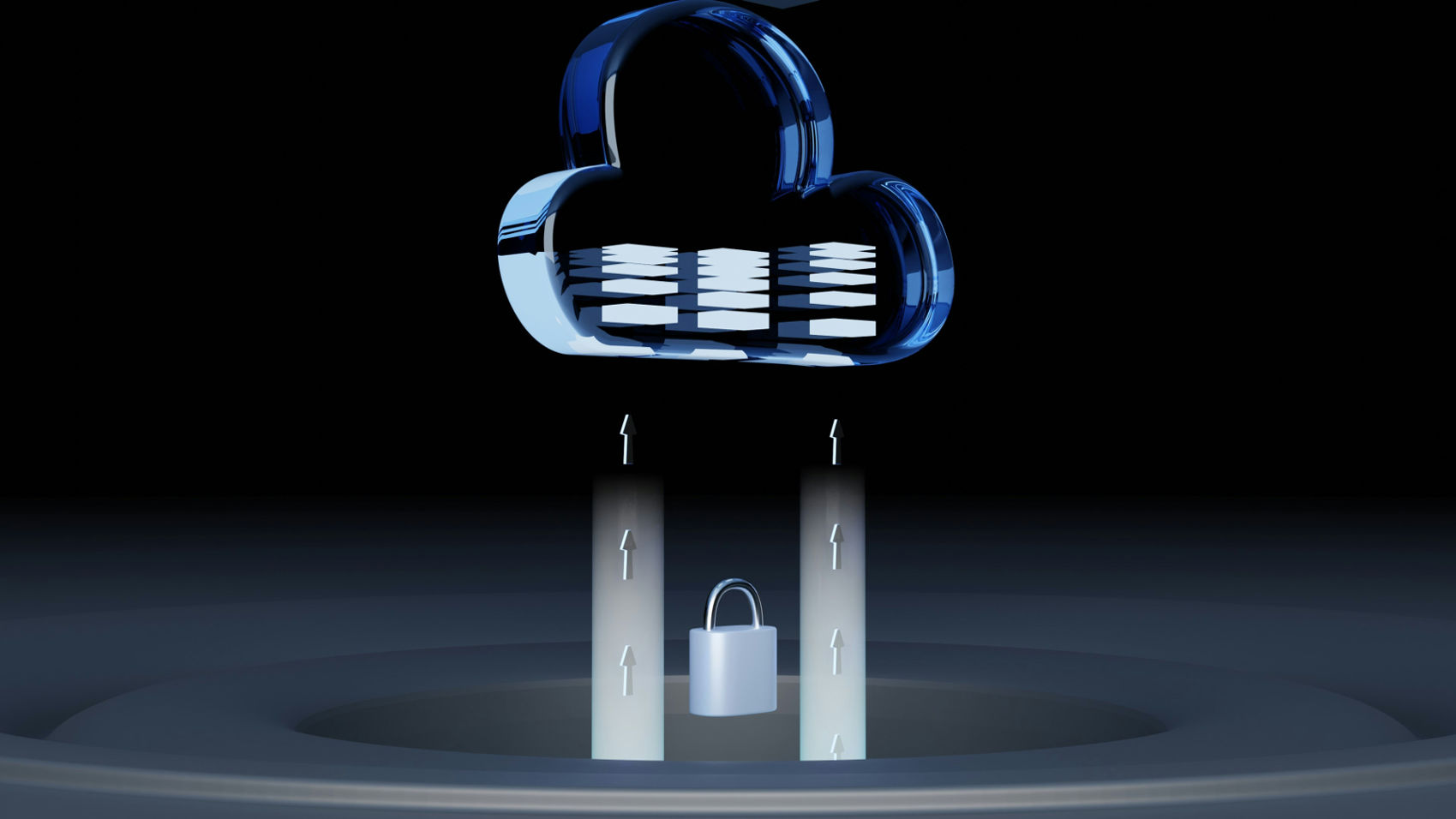 Security Updates
Security UpdatesA Guide to Cloud Network Technology: Benefits and Types
Unlock the potential of cloud network technology for seamless connectivity. Learn and scale solutions that drive business innovation and growth via...
 Security Updates
Security UpdatesAffordable Managed IT Services for Small Businesses
Explore top-managed IT services for small businesses to boost efficiency and security. Get expert insights and practical tips to optimize your IT o...
 Security Updates
Security UpdatesSecure Your Network with Gateway Security Solutions
Explore the essentials of gateway security: learn about its importance for network protection and best practices to safeguard your digital assets e...
 Security Updates
Security UpdatesDisaster Recovery Testing: Ensure Business Continuity
Explore effective disaster recovery testing strategies in this guide to maintain business continuity, prevent data loss, and minimize downtime duri...
 Security Updates
Security UpdatesMaximizing Security: Vulnerability Management Lifecycle
Explore the complete guide to the Vulnerability Management Lifecycle to boost your cyber resilience and secure your business IT infrastructure effe...
 Security Updates
Security UpdatesYour Network with Endpoint Security Management
Explore our comprehensive guide on Endpoint Security Management to understand its importance, how it works, and best practices for robust network s...
 Security Updates
Security UpdatesEnsuring Security Compliance: Tips, Insights & Strategies
Discover the essentials of security compliance, its importance, frameworks, and tools. Learn how to protect data and meet regulatory standards effe...
 Security Updates
Security UpdatesBoost Your Security with Internal Penetration Testing
Dive into internal penetration testing with our in-depth guide. Learn the essentials, techniques, and best practices to fortify your cybersecurity ...
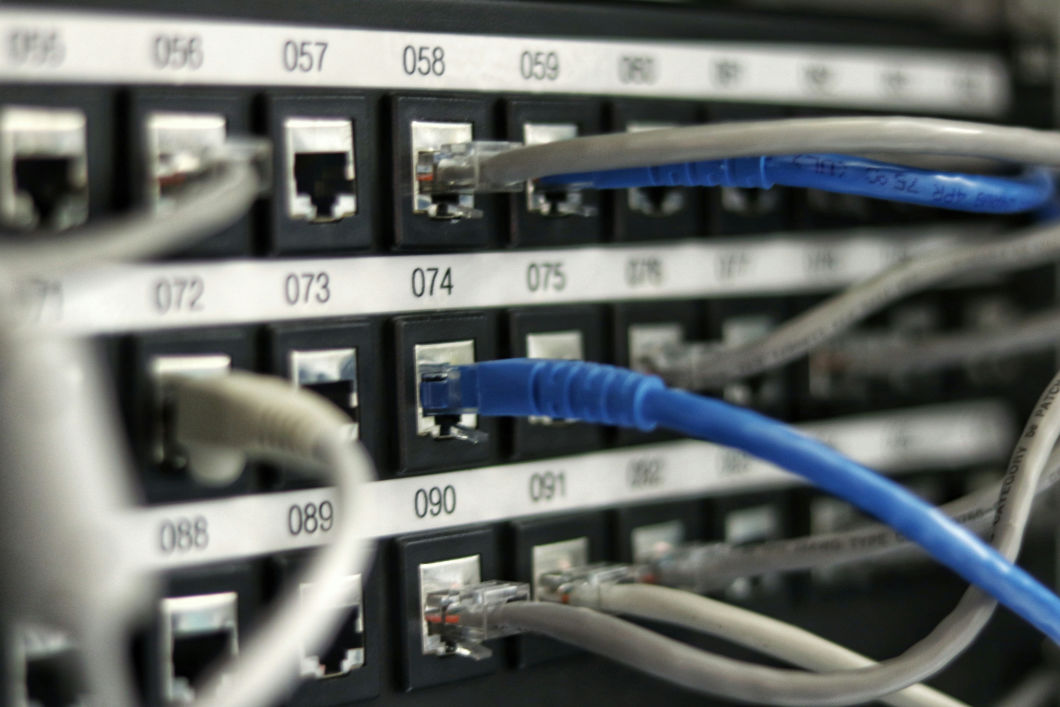 Security Updates
Security UpdatesEgress vs Ingress: A Guide to Data Traffic Management
Understand Egress vs Ingress in data management. Learn and explore their roles, traffic analysis, risks, and best practices for network and cloud s...
 Security Updates
Security UpdatesPrevent Credential Harvesting to Protect Your Precious Data
Understand credential harvesting. Learn how it works, common techniques, its impact, and strategies to prevent and mitigate attacks to secure your ...
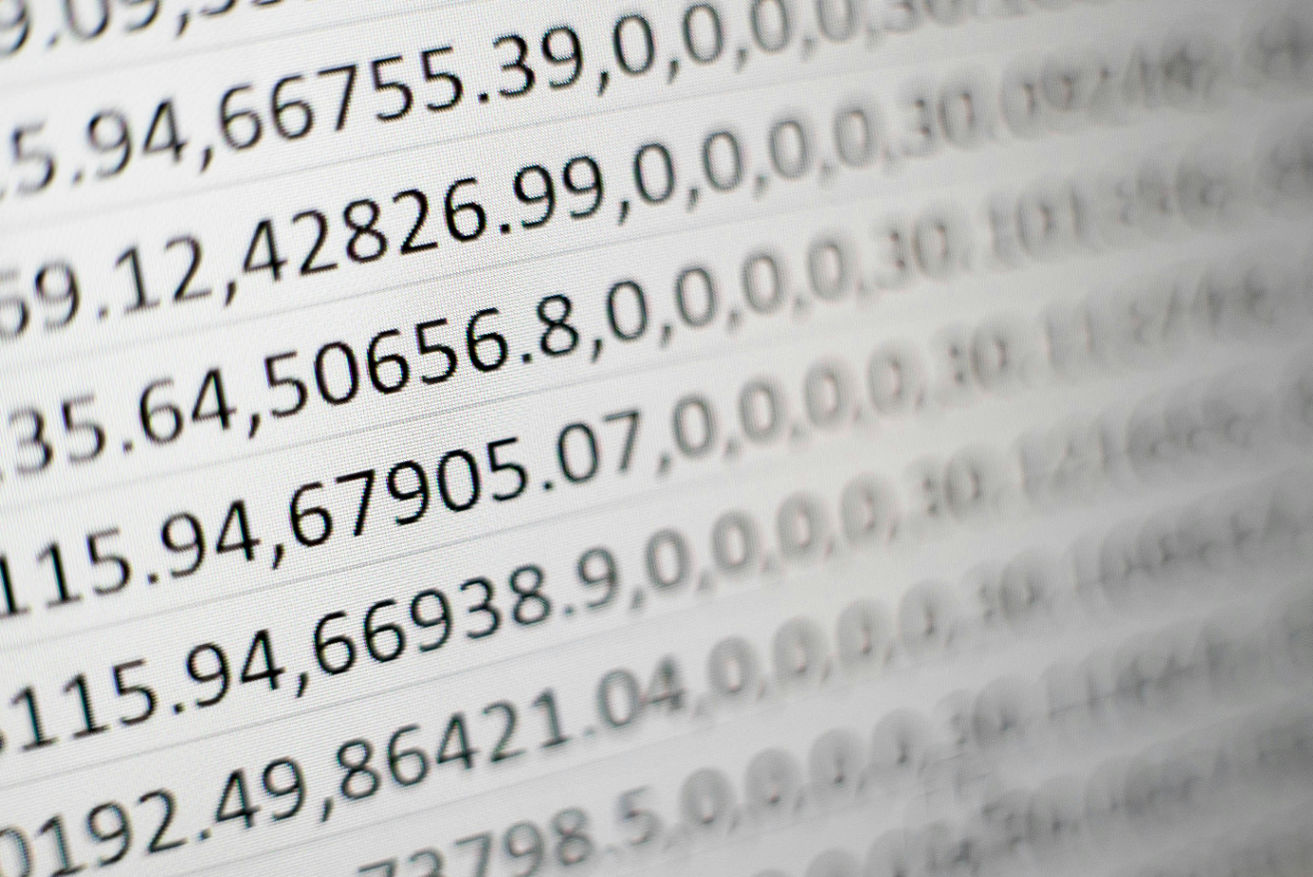 Security Updates
Security UpdatesSecure Your Big Data: Top Solutions for Data Security
Protect your valuable data with our robust big data security solutions. Learn about the threats and Safeguard against cyber threats and ensure comp...
 Security Updates
Security UpdatesSecure Your Network with Advanced Management Solutions
Explore the details of comprehensive network security management: Learn key strategies, best practices, and tools to safeguard your digital environ...
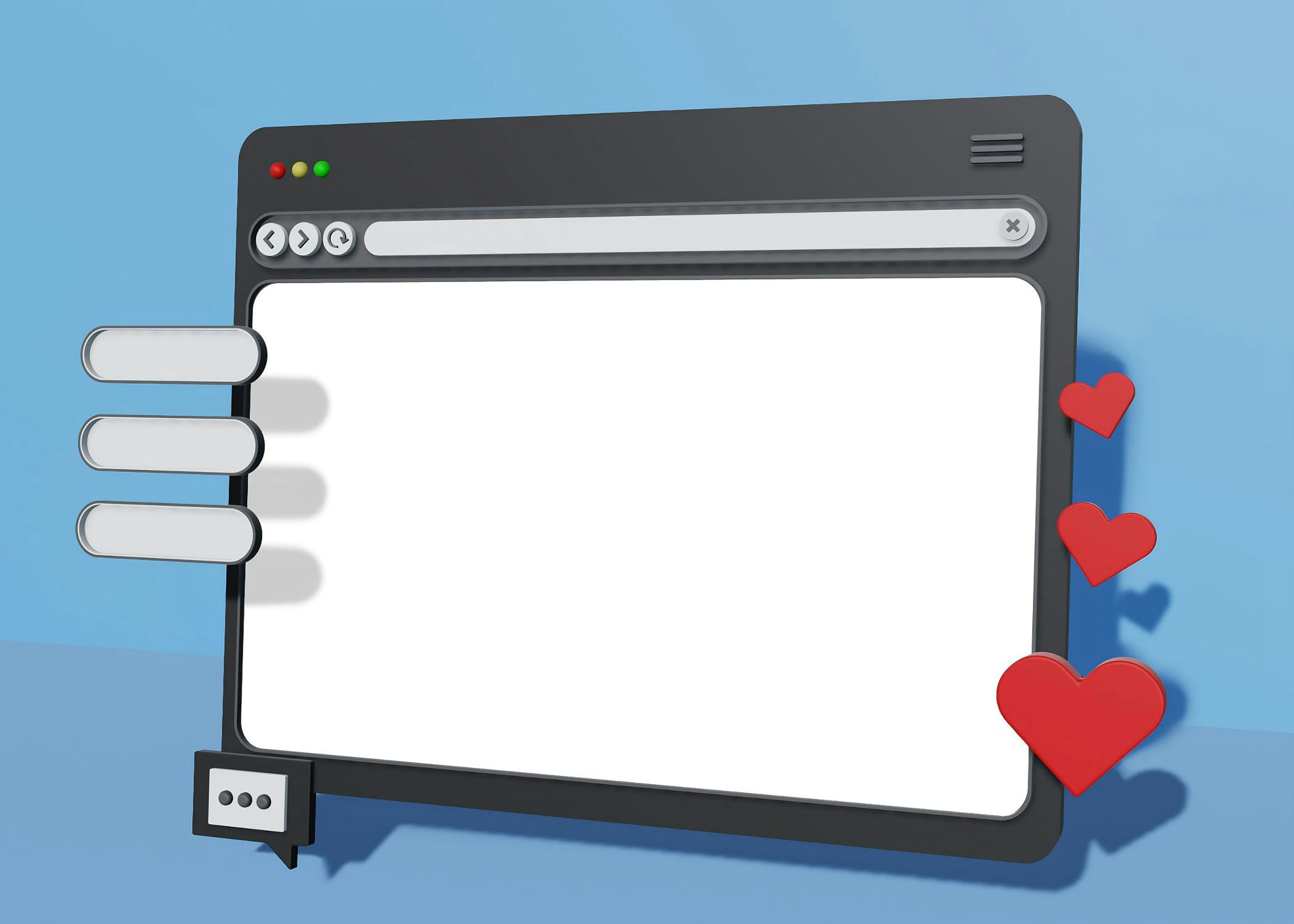 Security Updates
Security UpdatesGuide to On-Path Attacks: Protecting Your Cybersecurity
Learn about on-path attacks in this comprehensive guide, exploring definitions, types, consequences, and key prevention strategies to safeguard you...
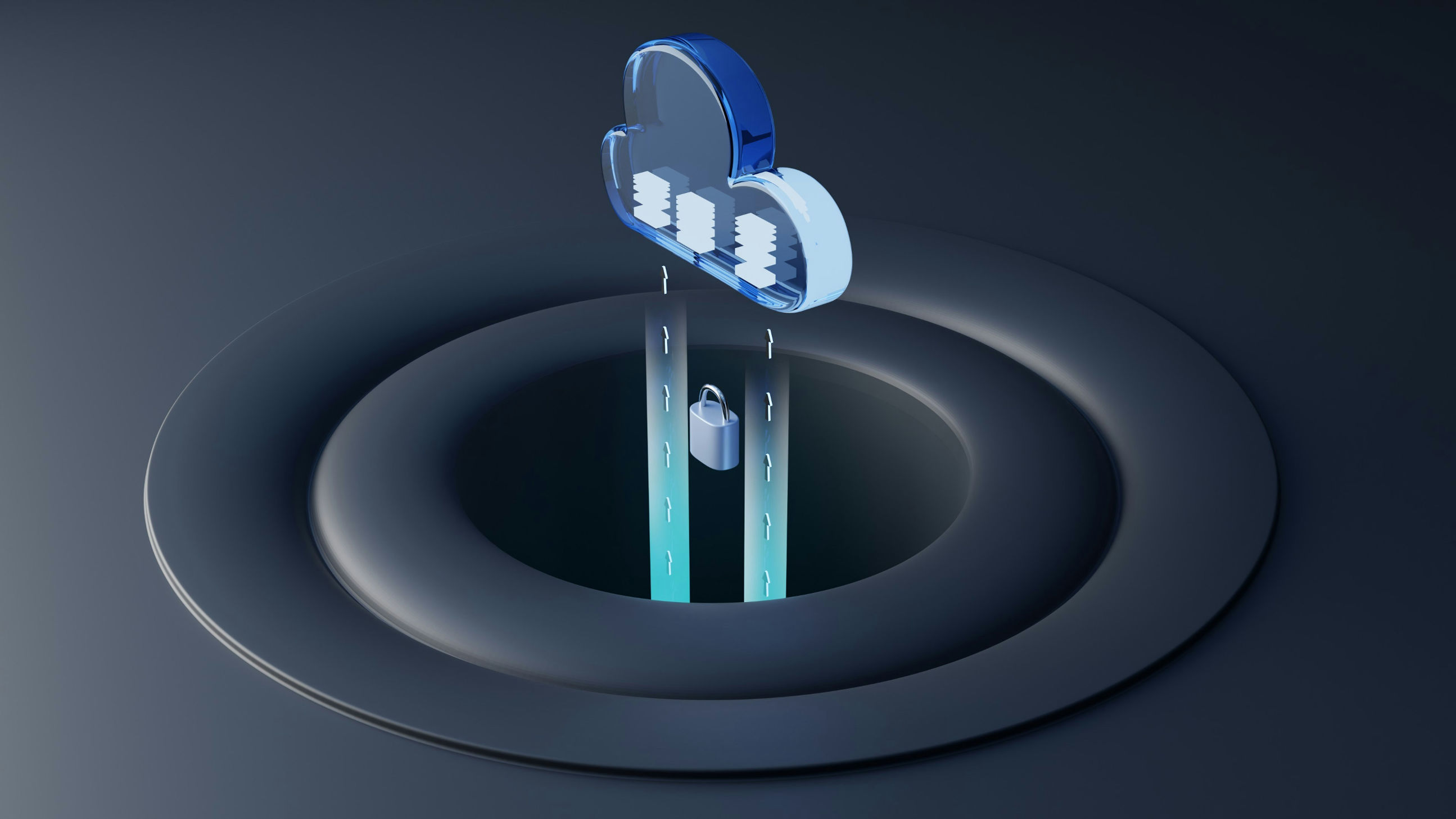 Security Updates
Security UpdatesExploring Managed Cloud Services: A Comprehensive Guide
Dive into the Managed Cloud Services with our in-depth guide. Explore benefits, types, and best practices to enhance your business's cloud strategy...
 Security Updates
Security UpdatesComprehensive Guide to Ubiquitous Computing: Impact & Future
Explore the details of ubiquitous computing, from its core concepts and layers to its societal impact, key technologies, applications, and future p...
 Security Updates
Security UpdatesClone Phishing Explained: Detection and Prevention Guide
Discover how clone phishing works and its impact. Learn effective strategies to identify, prevent, and respond to these sophisticated email threats...
 Security Updates
Security UpdatesHow to Secure Your Business with Cyber Security Insurance
Explore the essentials of Cyber Security Insurance, covering its importance, types of coverage, benefits, and considerations for businesses in the ...
 Security Updates
Security UpdatesEfficient Data Spooling Solutions For Streamlined Operation
Learn How To Efficiently Manage And Store Your Data With Our Reliable Data Spooling Services. Keep Your Information Organized And Accessible With T...
 Security Updates
Security UpdatesMaximizing Compliance & Risk Management: Expert Strategies
Learn how to ensure business success with effective compliance and risk management strategies. Explore definitions, differences, frameworks, and ch...
 Security Updates
Security UpdatesUnderstanding MDF vs IDF: Key Differences & Benefits
Explore the crucial differences and examples between MDF and IDF in networking, understanding their roles, functions, and impact on network infrast...
 Security Updates
Security UpdatesRedZone Wins CRN's Top Security 100 & MSP 500 Awards 2024
RedZone Technologies earns CRN's Security 100 & MSP 500 Awards, affirming its leadership and innovative approach in the cybersecurity and IT manage...
 Security Updates
Security UpdatesJames Crifasi Speaks on Cybersecurity at Tech Conference
Join James Crifasi, CTO & COO of RedZone Technologies, at the Tech Conference as he explores cybersecurity's role in driving business growth and ad...
 Security Updates
Security UpdatesRedZone's James Crifasi Wins SonicWall's Technical Hero Award
CTO James Crifasi of RedZone Technologies earns SonicWall's Technical Hero of the Year, exemplifying unparalleled dedication to cybersecurity and I...
 Security Updates
Security UpdatesHow to Encrypt Email in Outlook
Learn how to encrypt email in Outlook with our step-by-step guide. Secure your messages using S/MIME, Office 365 Encryption OME, and add-ins for pr...
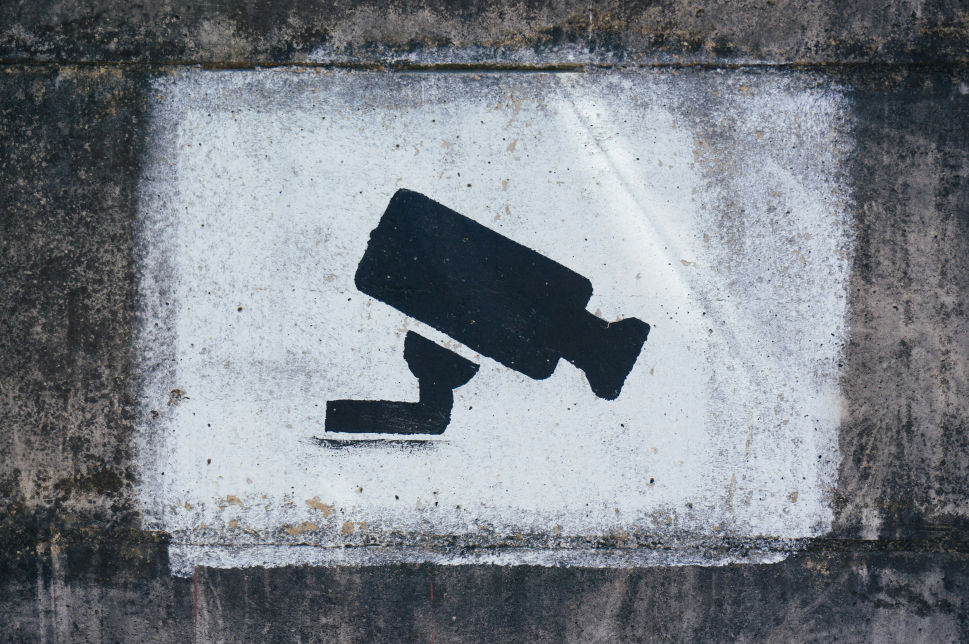 Security Updates
Security UpdatesWhat Is Security Monitoring? Importance and Tools
Explore the importance of security monitoring, its key roles, types, and how it protects organizations against threats, ensuring compliance and pro...
 Security Updates
Security UpdatesServer 2012 R2 End of Life: Implications and Next Steps
Learn about Server 2012 R2 end of life: Understand its impact, key dates, risks post-EOL, and explore upgrade options and migration strategies for ...
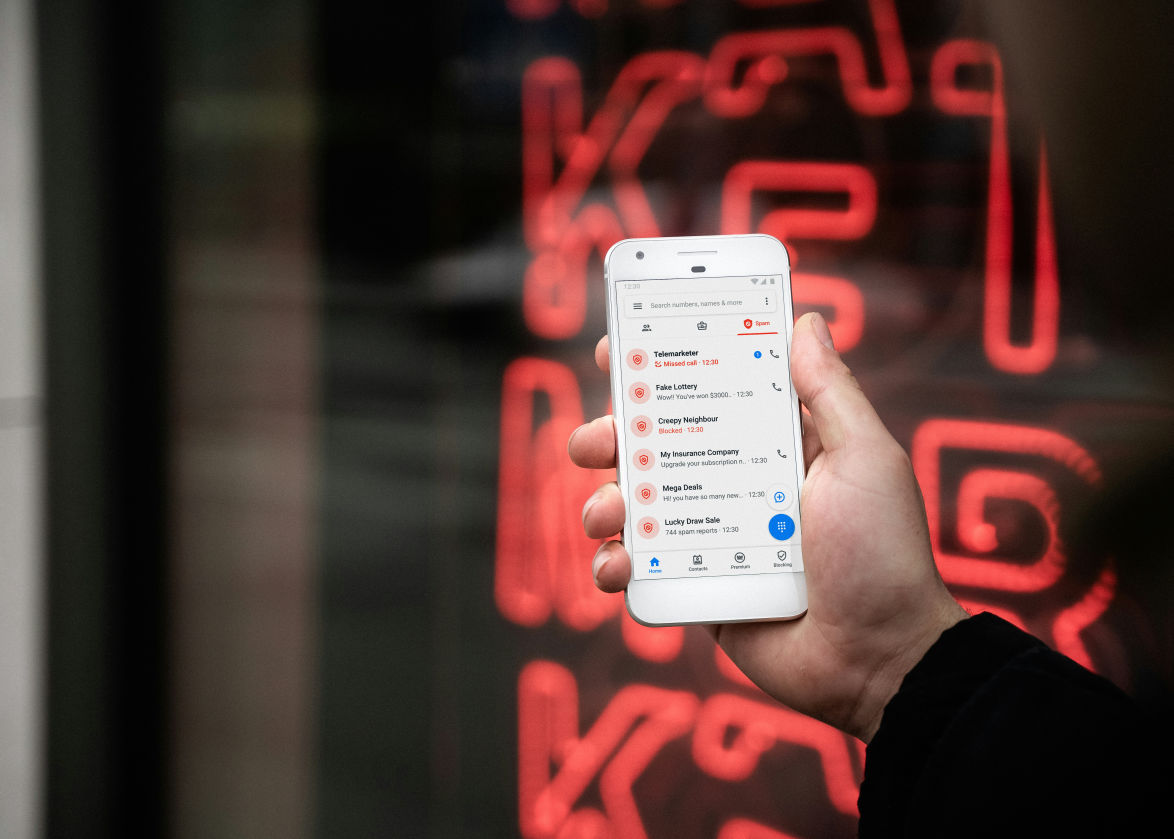 Security Updates
Security UpdatesProtect Personal Data: Smishing and Phishing Prevention
Know how to identify and protect against smishing and phishing attacks. Learn the techniques, types, and preventive measures for personal and busin...
 Security Updates
Security UpdatesSmurf Attack Guide: Prevention & Detection Strategies
Explore prevention & recovery from Smurf Attacks: Understand DDoS defense, detection signs, and secure network practices in our detailed cybersecur...
 Security Updates
Security UpdatesWhat is a Bad USB Attack, and How Do You Prevent It?
Learn about Bad USB attacks, their various forms, and strategies for safeguarding devices. Learn how to mitigate risks with effective prevention te...
 Security Updates
Security UpdatesKey Differences Between DOS Attack vs DDOS Attack
Explore the key differences between DDoS vs DoS attacks, their types, impacts, and prevention strategies in our comprehensive guide to enhance cybe...
 Security Updates
Security UpdatesUnderstanding the Impact of a Ping of Death Attack
Explore the ins and outs of Ping of Death attacks. Understand how they work, their impact on networks, and strategies to prevent them to keep your ...
 Security Updates
Security UpdatesThe Power of the Human Firewall: Your First Line of Defense
Discover the critical role of the human firewall in cybersecurity, combining employee vigilance with technology to protect against cyber threats ef...
 Security Updates
Security UpdatesStateful Firewall vs. Stateless Firewalls: What's the Difference?
Learn the key differences between stateful and stateless firewalls and how they protect your network. Discover the right choice for your security n...
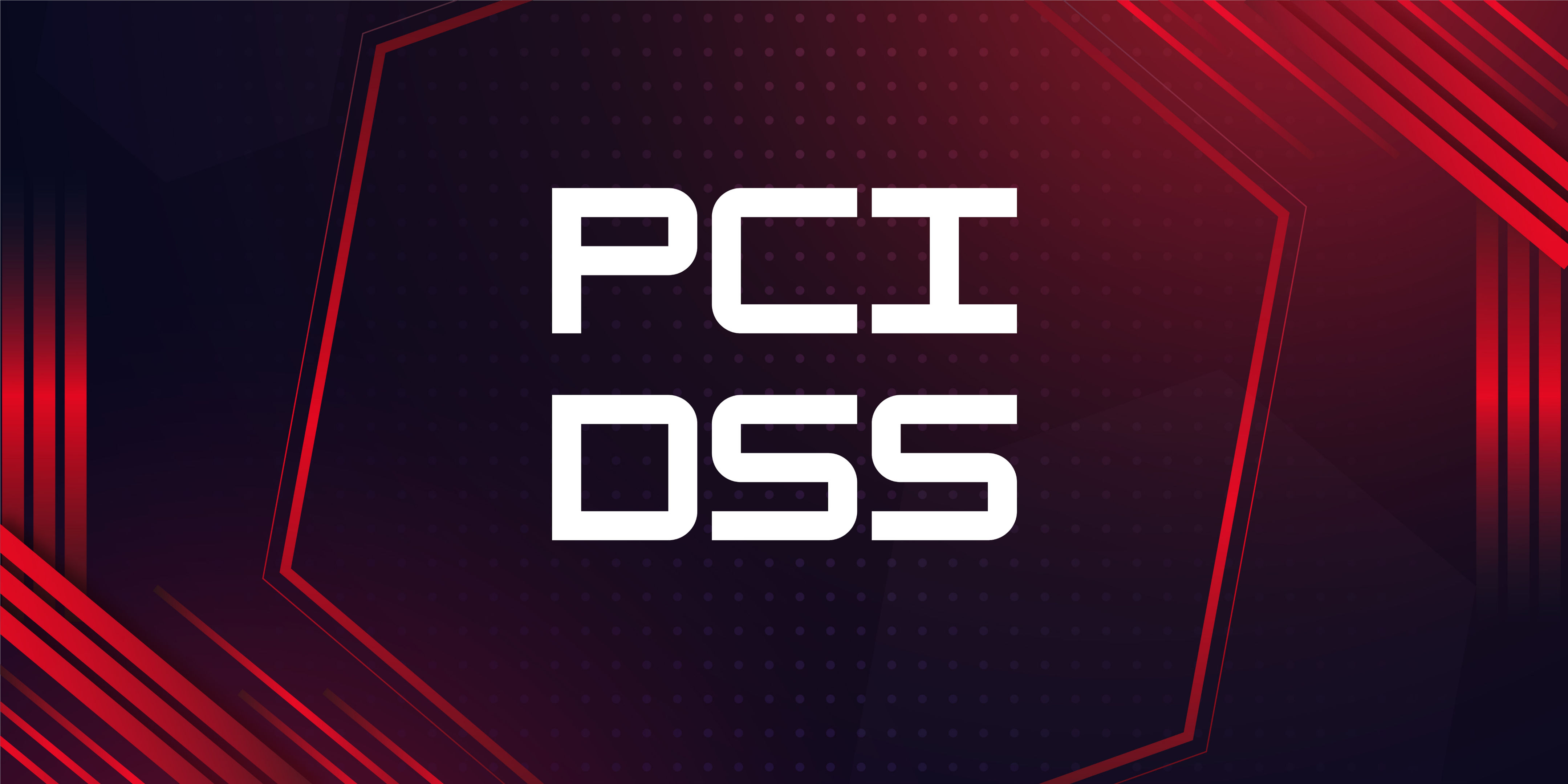 Security Updates
Security UpdatesUnderstanding the 4 Levels of PCI Compliance
Explore PCI DSS Compliance with RedZone: Key steps to protect card data and ensure secure transactions. Learn about compliance levels and tips for ...
 Security Updates
Security UpdatesWhat Is a Security Breach and How to Prevent Them
Learn how to effectively guard your business against security breaches with RedZone Technologies. Discover simple steps to keep your data safe and ...
 Security Updates
Security UpdatesUnderstanding Tailgating in Cybersecurity
Understand tailgating attacks in cybersecurity: what they are, how they work, and effective strategies for prevention to keep your business...
 Security Updates
Security UpdatesWhat is a Managed Service Provider and Its Benefits
Explore the role of Managed Service Providers (MSPs) in enhancing IT efficiency and cybersecurity for businesses, covering benefits, servi...
 Security Updates
Security UpdatesBreach Prevention: 5 Best Practices to Protect Your Data
Learn about data breaches: what they are, their impact, and how to prevent them. Explore best practices for securing your business against cyber th...






